Project Omah Boto (which means ‘Brick House’) was born out of a client’s request for “Indonesia vibes”. The build site is located near the Pari Temple and Sumur Temple, Sidoarjo, East Java, which opened up the idea of historical red brick architecture that stems from the Majapahit Kingdom era. The materials and manufacturing techniques are passed on to craftsmen in Trowulan Village, home of the red brick industry, to this day. Andyrahman Architect team invited craftsmen to partner with them during the architectural process, making their skillset and integral part of the design. Other Nusantara elements, including bamboo, wood, and rattan, were introduced into the design to form a marriage of true Indonesian character.
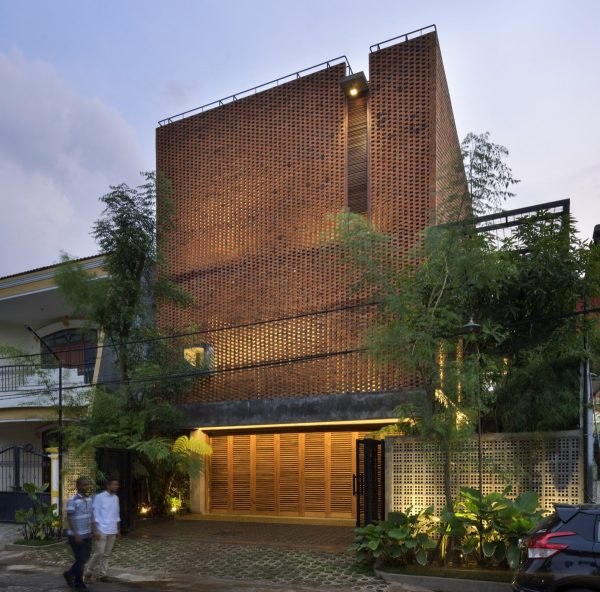
The red bricks in the Omah Boto (which means ‘Brick House’) became the main element, described by the designers as being like “a gene or cell of the building”. Brick pattern in Omah Boto is built using tectonic techniques, which require a high level of accuracy. These tectonic brick constructions combine design precision with craftsman ingenuity and understanding of the material’s character and quality. “Architect is the one who’s famous outside. While inside, the craftsmen emerges” explained Mr. Hasan, the brick project leader.
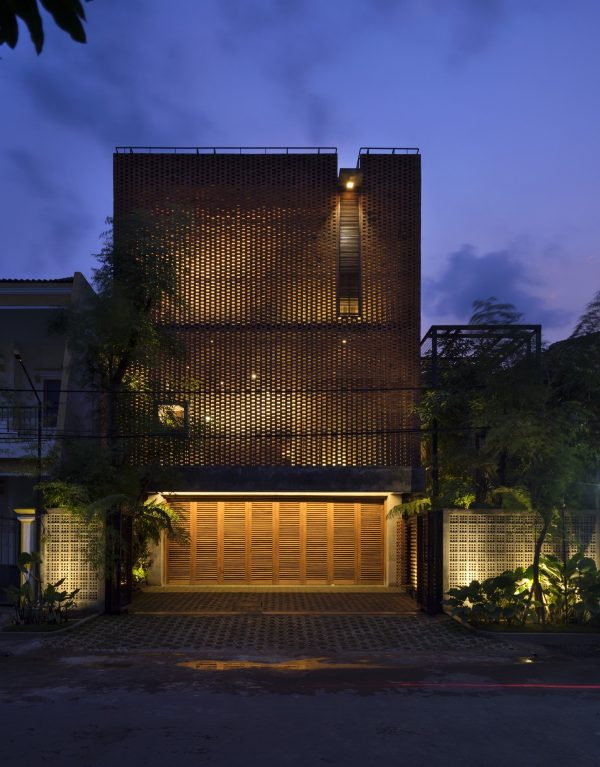
The 5x10x20cm brick dimension is used as the main measuring standard throughout all architectural aspects of Omah Boto, such as door or window width, sill height, and even room area.
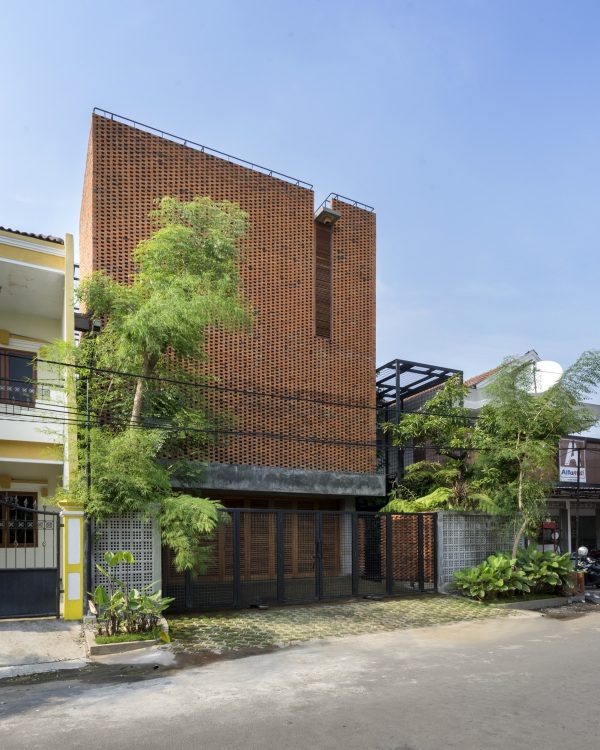
The home exterior design and build as a whole is truly unique in its collaborative nature, being not only built but designed side by side with traditionally trained craftsmen.
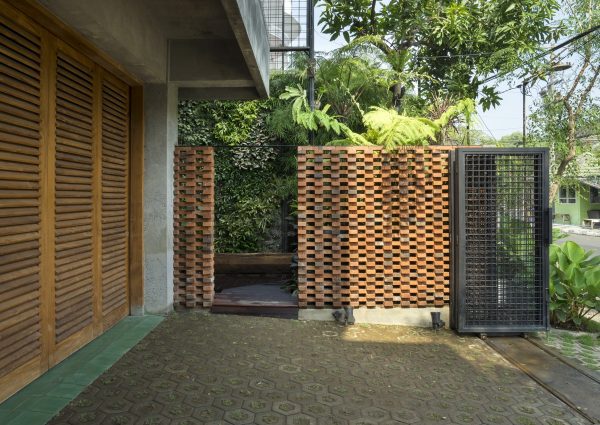
Light and air permeable brickwork formations build the structure of the house and the outer walls of its grounds. Metal gates pull closed across a garage entryway, which is hidden behind wood louvre doors.
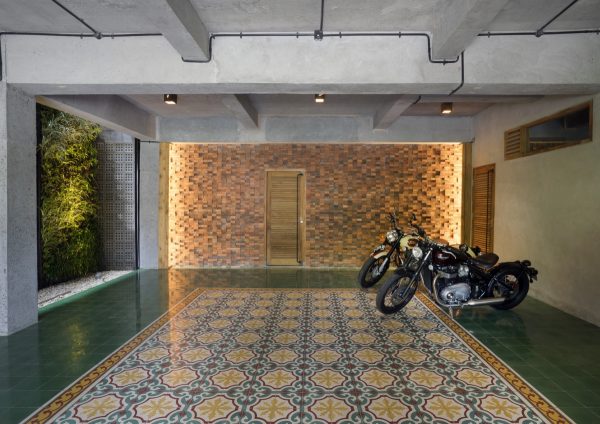
A motorcycle port is floored in beautiful green and yellow Indonesian tile, like a carpet of Batik motives.
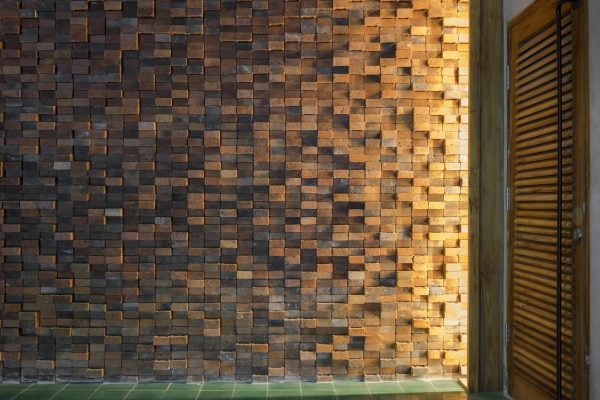
Decorative red brickwork is accentuated under lights at the back of the port, highlighting every dip and extrusion. Some of the brick arrangements in the house are taken from Batik motives, like the Parang and Pucuk Rebung motif used for wall and floor brick tectonics, and the Kawung motif on bathroom ceramics. These patterns were experimented with, and developed by the design team, to hark back to the main reason of brick usage in Indonesia from ancient times. The results bring about an interesting rhythm, and characterful arrangements.
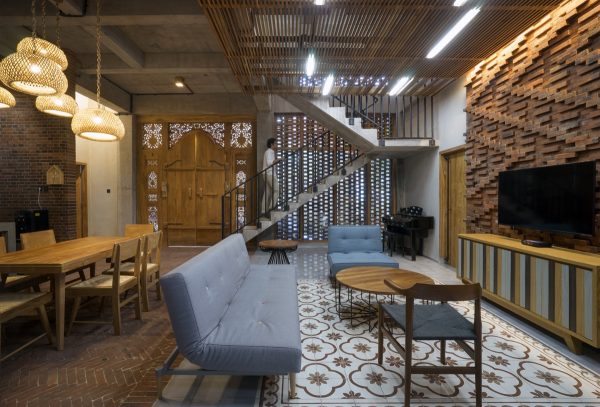
Once inside the home, the red brickwork is seen making stunning zigzag pattern across a TV wall. A blue and yellow striped media cabinet matches with a powder blue modern sofa and a blue accent chair. A round coffee table sits atop a gorgeous Indonesian rug design that defines the sitting area. Omah Boto adopts the traditional Javanese house concept, whereby there are three main parts to a house’s zoning: The Pendhapa (a public/ communal area in the front side of the house), Pringgitan (a transition area in the middle), and Dalem (a private area in the back).
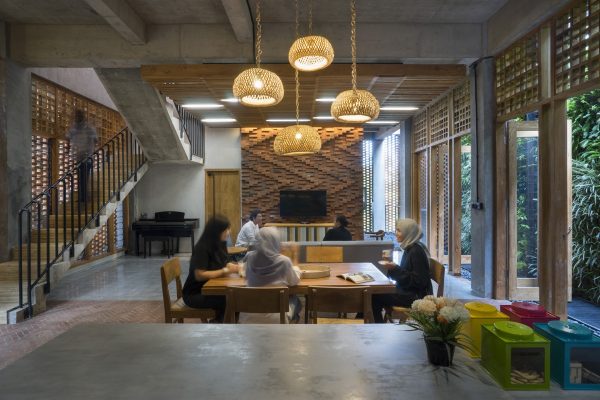
Traditionally, Javanese house zoning is arranged horizontally but in Omah Boto it has been stacked in a vertical arrangement: The whole of the first floor is utilised as a communal room, the next floor up contains a living room, and the bedrooms take up the top story. Down in the communal room, a sociable dining spot sits behind the lounge area, equipped for six diners or tea drinkers.
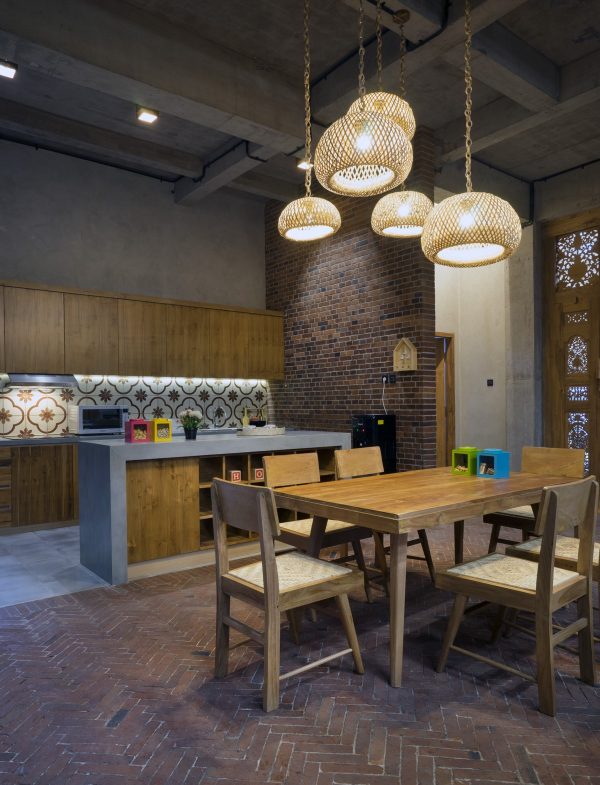
Colourful canisters prick the kitchen diner with bright colour. Patterned tile adds energy to the backsplash of a basic wood and concrete kitchen design. Five rattan dining room pendant lights have been grouped above the simple wood dining set at different heights to add movement and interest.
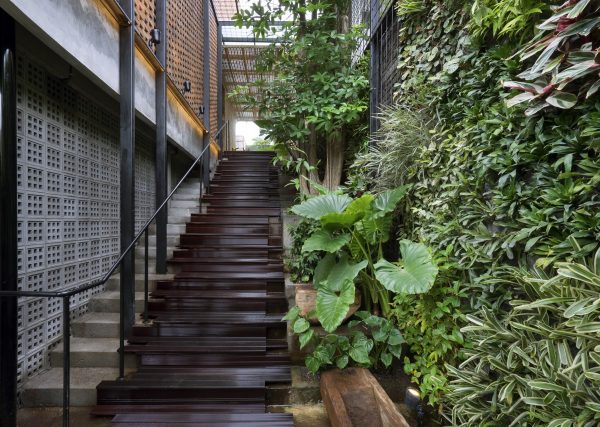
A dense vertical garden thrives at the side of a modern staircase design.
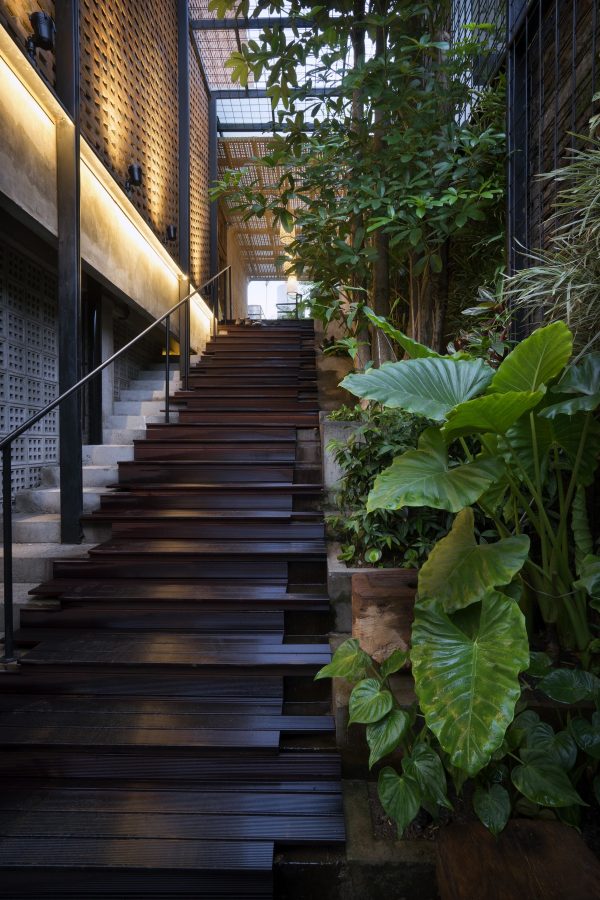
Dark stained wood planks encase solid concrete treads and risers.
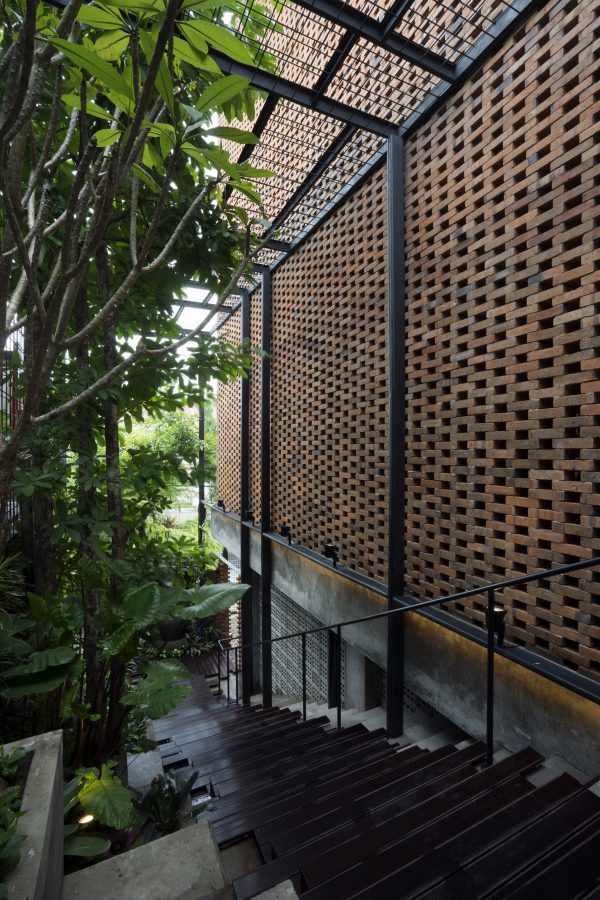
A black metal balustrade climbs one side of the staircase, whilst concrete planters congregate at the other.
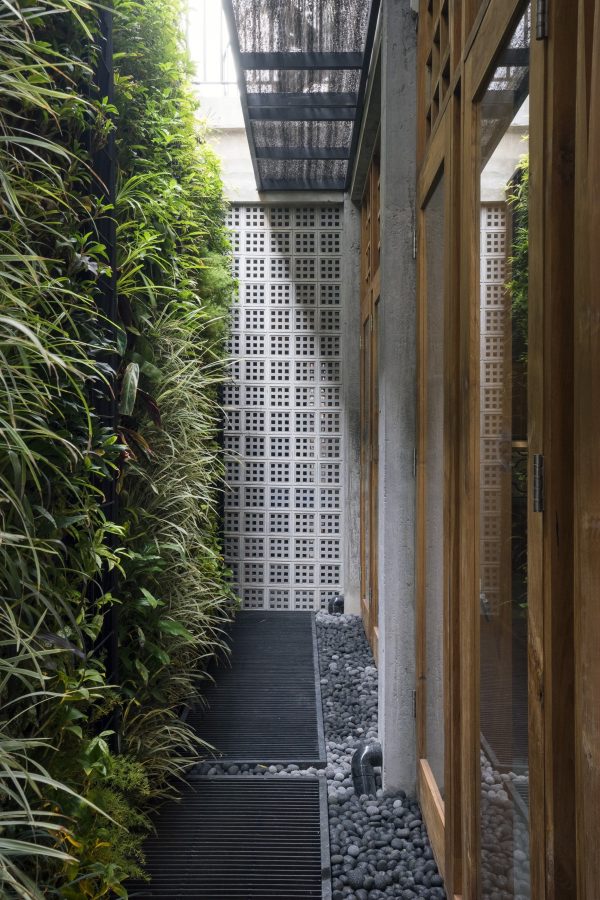
Vertical planting brings added shade to the interior of the home.
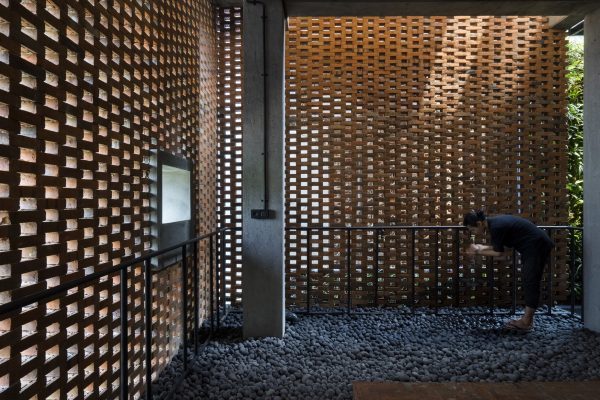
The prayer room (or Musholla) in this house is characteristic of a Garbhagriha, through the brick construction of floor, walls, and ceiling. The sacred Hindu Garbhagrha (which translates from Sanskrit as ‘womb chamber’) is here to remind all who enters of their origin, and purpose of life in the world.
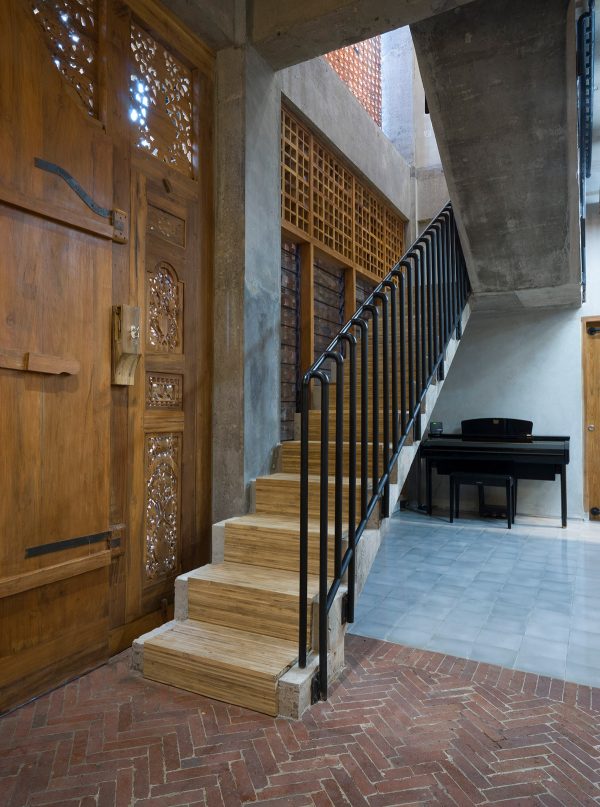
Impressive craftsmanship is seen in and around the front doors of the home too, where beautiful woodwork panels manipulate the penetrating sunlight.
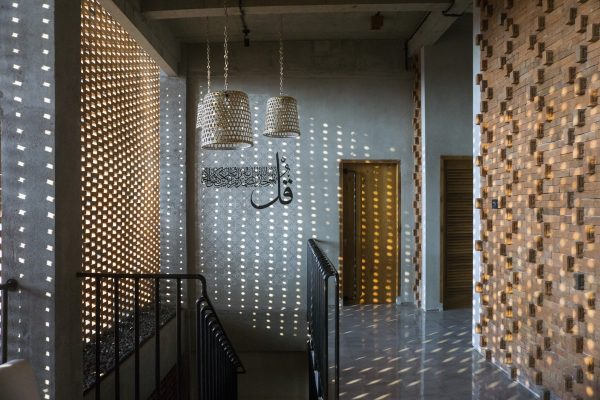
More sunlight patterns push through the walls on each level of the home.
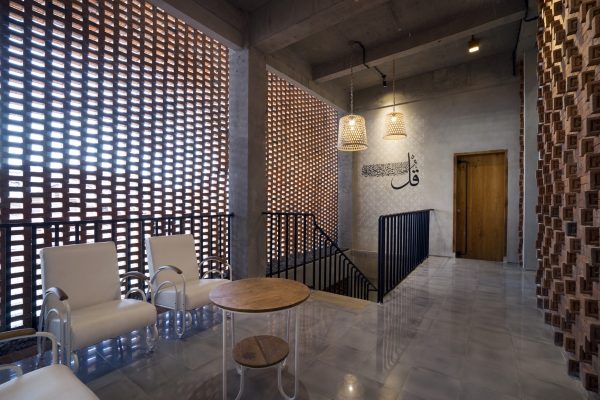
Rattan light shades echo the crosshatched brickwork formation.
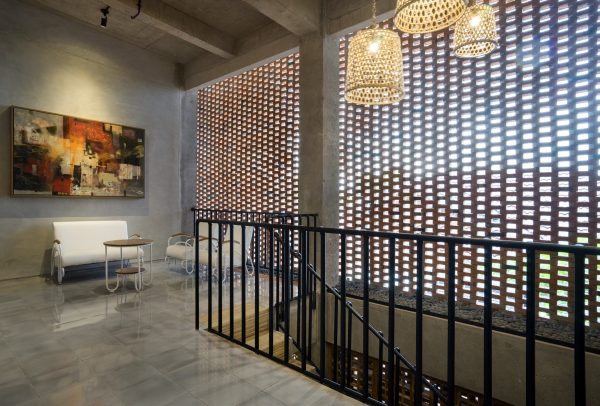
A small lounge rests in the shade.
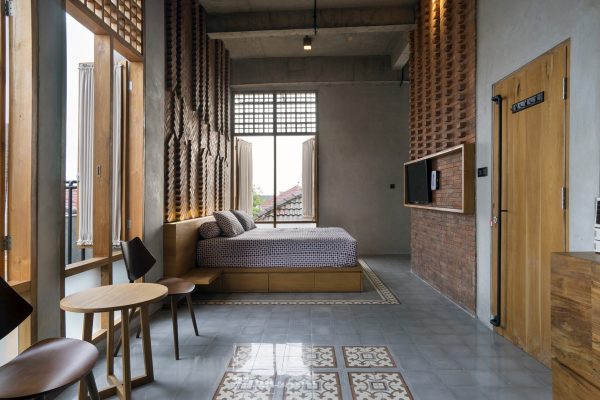
Tile pattern shines on bare bedroom floors.
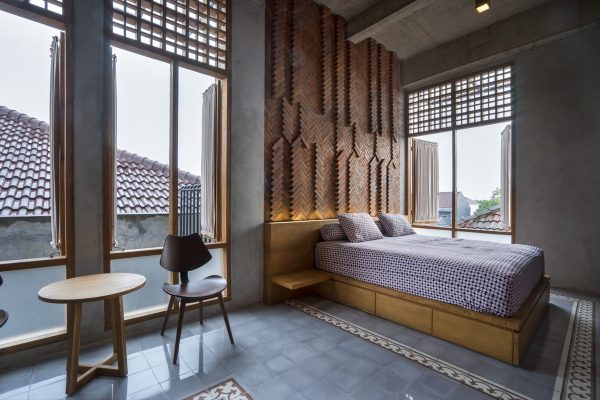
A superb red brick headboard rises in impeccable undulating pattern. There is an air of Frank Lloyd Wright about this bedroom design, and its use of natural materials.
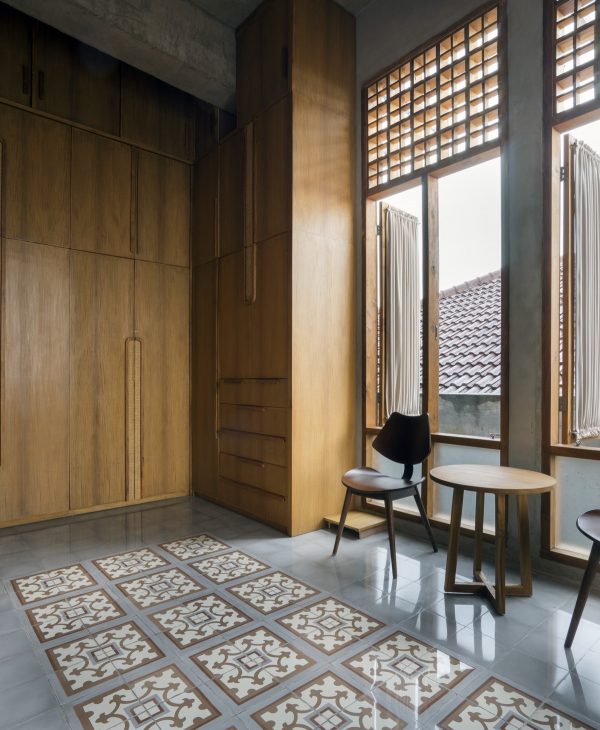
Fitted wooden wardrobes hug the corner of the room.
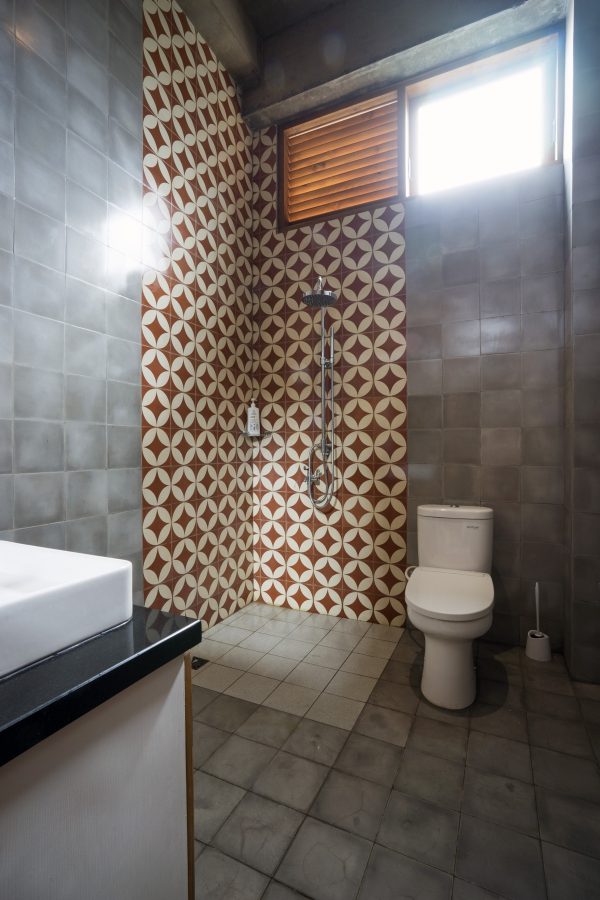
A shock of red tiles tower in the shower room.
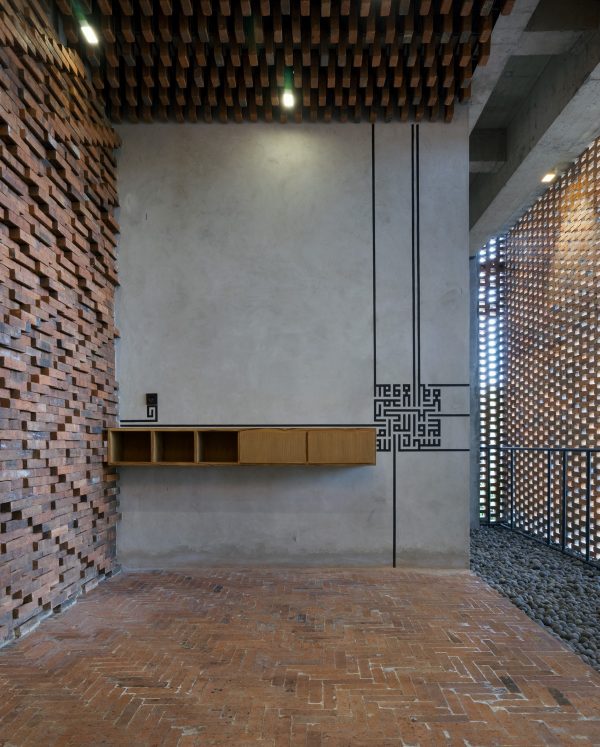
The outer skin of the Musholla is designed to reduce glare from the sun, and to maximise airflow while maintaining the homeowner’s privacy in the sacred room.
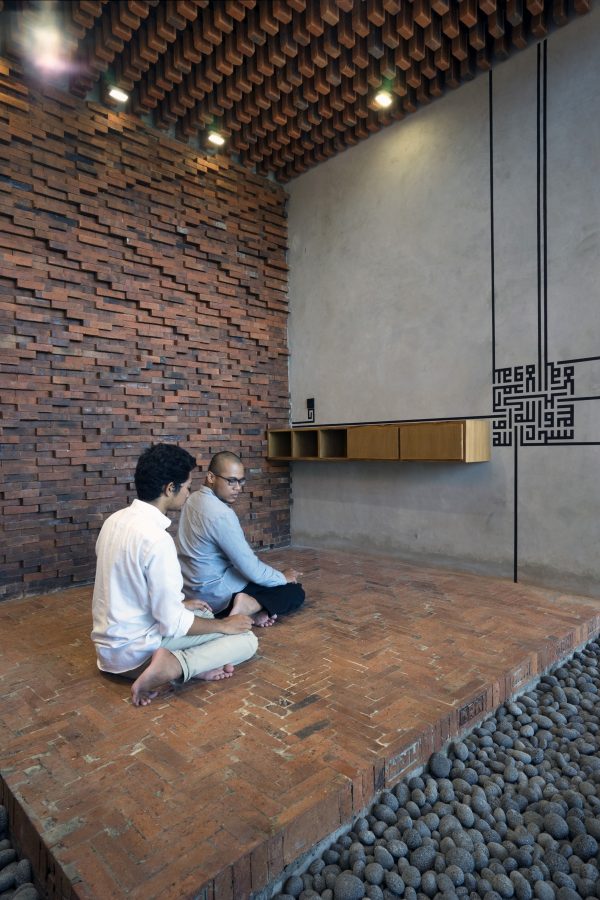
Bricks appear to hang impossibly from the ceiling over the prayer room.
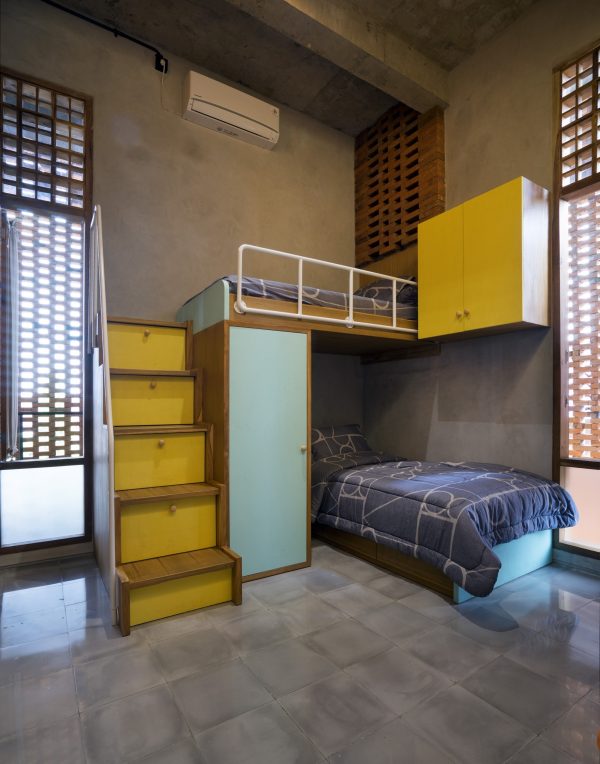
Kids’ beds are stacked to utilise the tall ceiling height, with storage chambers included in and around the bed design.
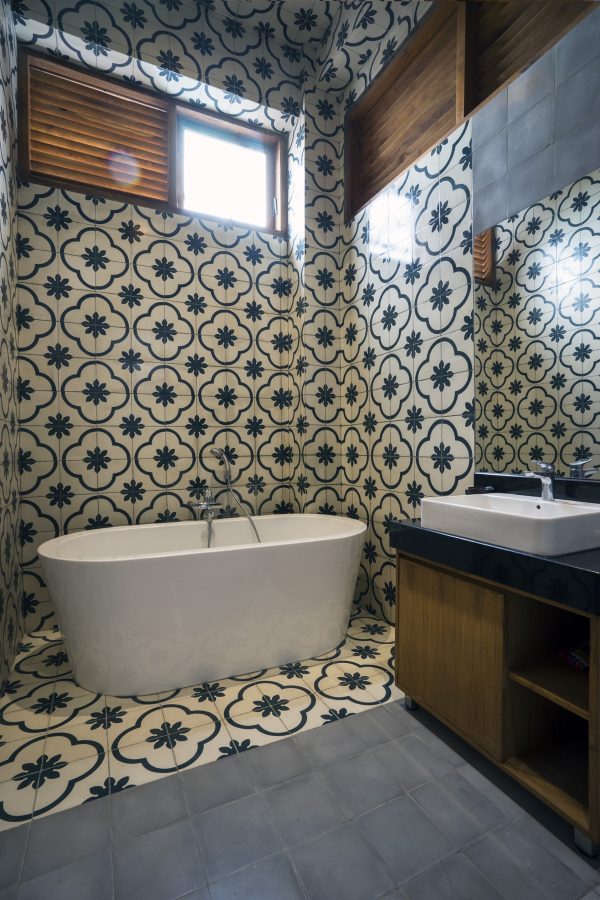
A bathtub bathes in sea of blue and white tile.
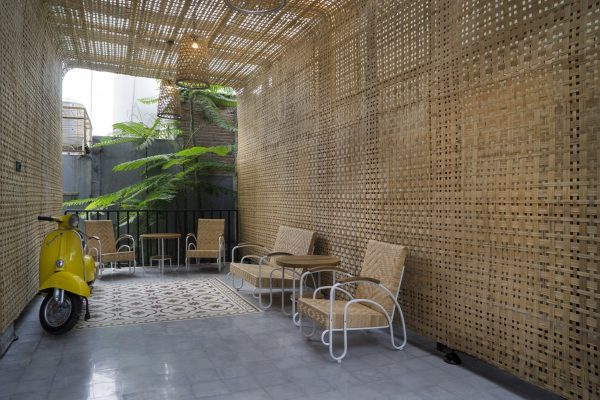
Outdoor chairs sit beneath a rattan canopy.
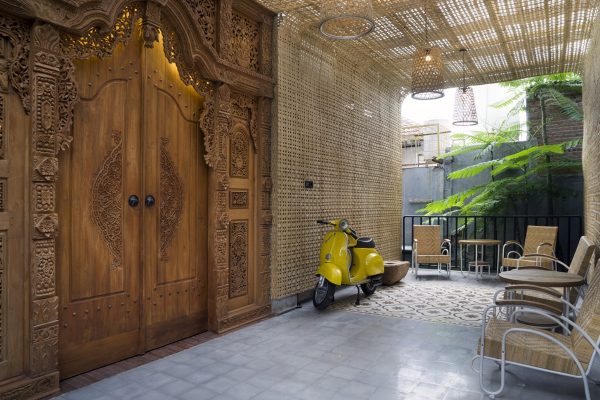
A view of the impressively ornate front doors from the outside.
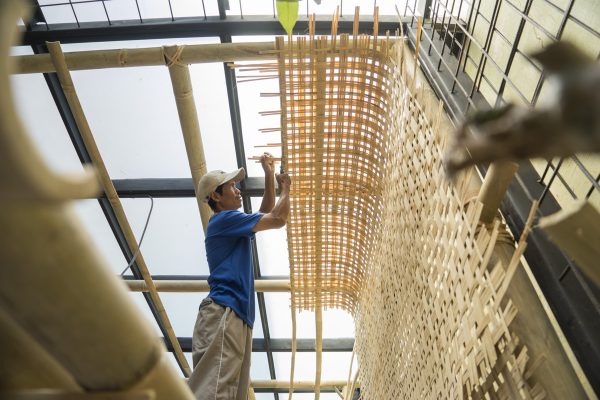
The rattan canopy over the home entryway requires outstanding craftsmanship.
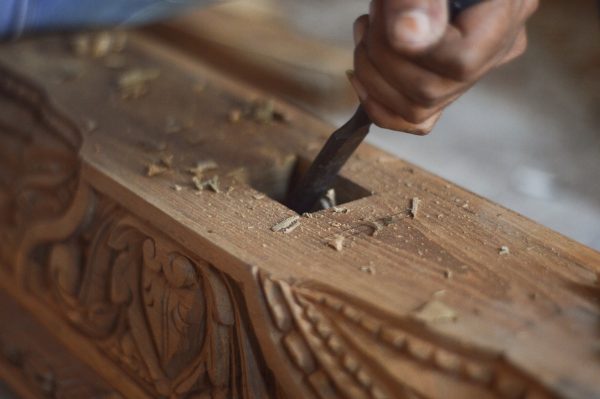
Indeed, it is painstaking craftsmanship that shines through in each and every detail of this home.
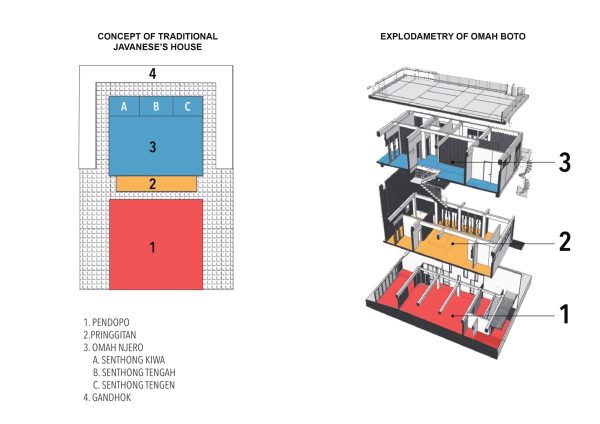
Traditional Javanese house layout vs the vertical Omah Boto version.
Recommended Reading: Gorgeous Tropical Villas In Bali, Indonesia
Related Posts:
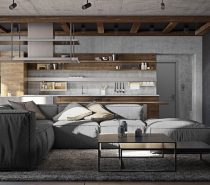 Three Homes Using Exposed Brick, Wood Panelling and Grey To Their Advantage
Three Homes Using Exposed Brick, Wood Panelling and Grey To Their Advantage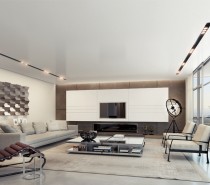 Apartment Interior Design Inspiration
Apartment Interior Design Inspiration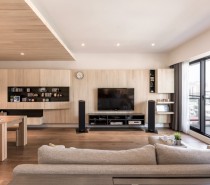 A Modern Apartment Celebrates the Look of Natural Wood
A Modern Apartment Celebrates the Look of Natural Wood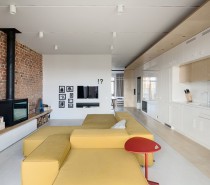 A Simple, Modern Home with a Lot of Personality is Perfect for a Fun Couple (and their dog!)
A Simple, Modern Home with a Lot of Personality is Perfect for a Fun Couple (and their dog!)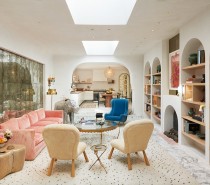 Four Sunny and Stunning California Interiors from Commune Designs
Four Sunny and Stunning California Interiors from Commune Designs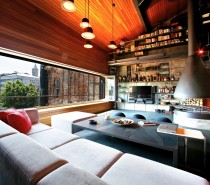 Karakoy Loft Uses Rich Wood Features and Creative Industrial Elements
Karakoy Loft Uses Rich Wood Features and Creative Industrial Elements
Source: https://ift.tt/2ZNn2gw
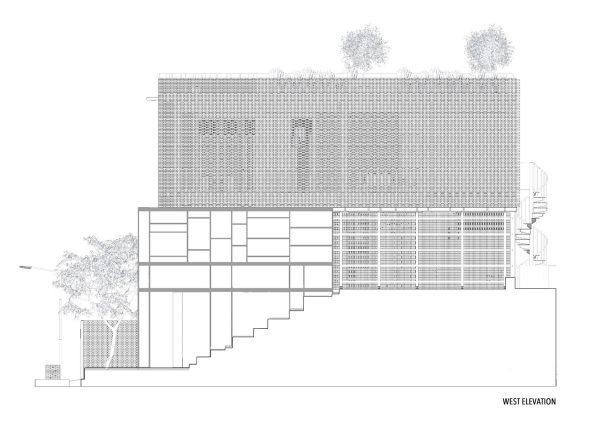
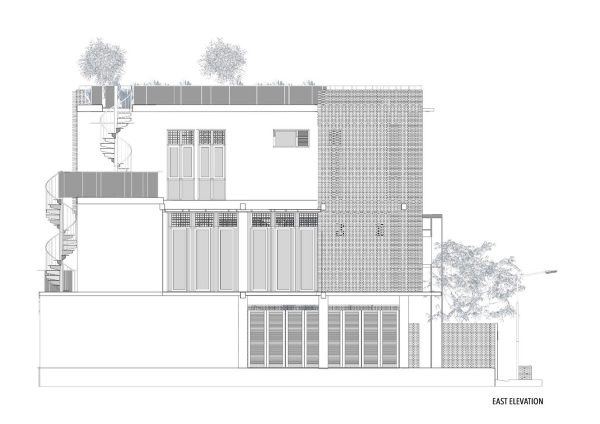
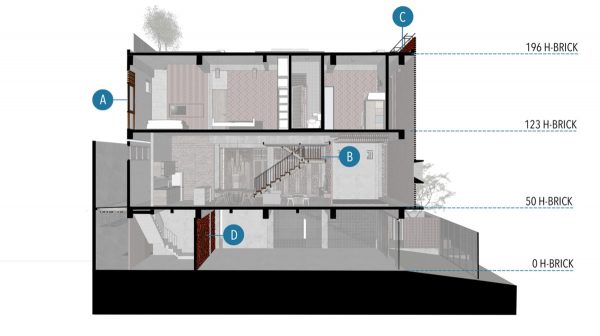
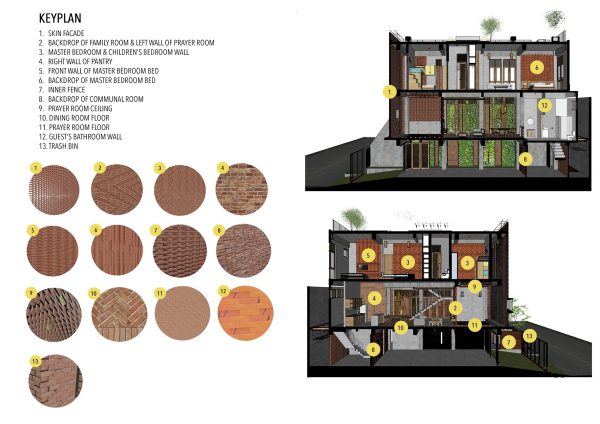
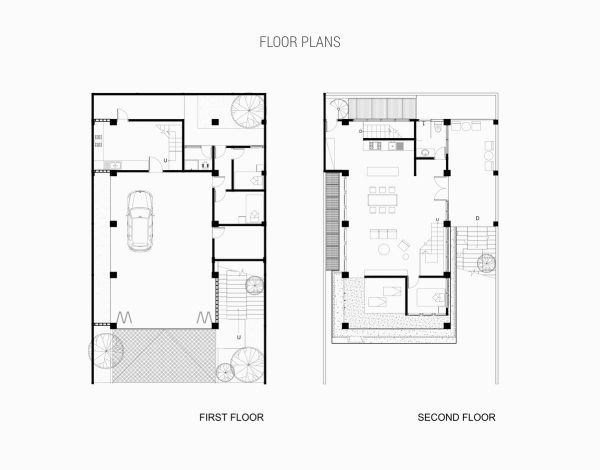
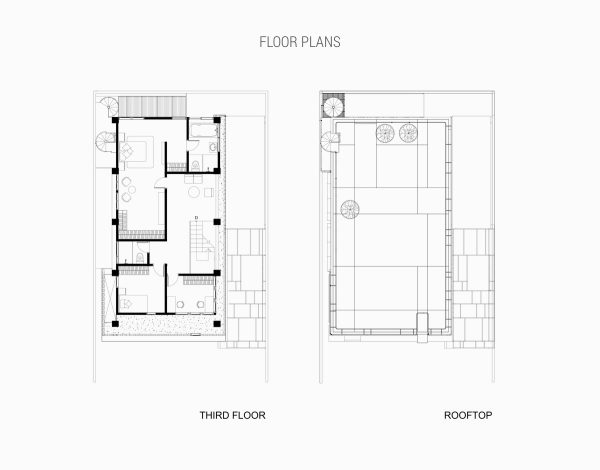
No comments:
Post a Comment